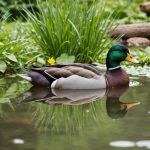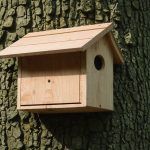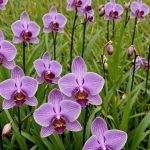Overview of Local Orchid Species in the UK
Orchids are not just ornamental beauties; they play a critical role in promoting biodiversity within UK ecosystems. These plants often form specific symbiotic relationships with fungi and other flora, which contributes significantly to the ecosystem’s health and stability. In the UK, several local orchid species, including the Bee Orchid, Common Spotted Orchid, and Early Purple Orchid, stand out for their unique adaptations.
Each of these species has evolved to thrive under particular conditions. The Bee Orchid, for example, is known for its remarkable flower mimicry that attracts pollinators. Meanwhile, the Common Spotted Orchid is recognized by its quintessential beauty and adaptability, making it a frequent inhabitant of British grasslands.
A lire en complément : Ultimate guide for uk homeowners: crafting perfect bat boxes tailored for your local environment
However, the survival of these local orchid species is currently under threat. Declines are mainly due to habitat destruction, such as land development, and changes in land use. Pollution and climate change also add immense pressure. The conservation of these native species is crucial, not only for maintaining biodiversity but also for preserving the ecological balance they facilitate. Understanding these challenges and the significant roles these orchids play might inspire more effective protection strategies.
Benefits of Protecting Local Orchids
Understanding the ecological importance of orchids is crucial in appreciating their role in our environments. Orchids contribute significantly to maintaining healthy ecosystems as they participate in complex ecological networks. They facilitate pollination by attracting specific pollinators, often unique to particular orchid species. This relationship not only supports the life cycle of the orchids themselves but also boosts biodiversity within the ecosystem.
A lire également : Enhancing biodiversity: innovative habitat management approaches by uk wildlife trusts
Protecting orchids yields tangible community health benefits. Flourishing natural landscapes offer communities cleaner air, water, and soil. Moreover, preserving orchids can positively impact the local economy through ecotourism, where nature enthusiasts and researchers visit to study and enjoy these striking plants. Conservation efforts thus support economic development while ensuring natural resources remain sustainable.
At its core, the conservation benefits extend beyond orchids to encapsulate the entire ecosystem. As biodiversity is enhanced through these efforts, other species, ranging from insects to mammals, find sustenance and habitat. This interconnectedness highlights the importance orchid protection plays in the broader context of biodiversity conservation. Thus, the interplay between orchid preservation and biodiversity is not just crucial but instrumental in maintaining ecological balance.
Community Engagement Strategies
Engaging your local community can play a transformative role in advancing orchid conservation efforts. Community involvement begins with establishing awareness programs and workshops that educate residents on the importance of preserving these beautiful plants. Such education programs can be tailored to different age groups and interests, ensuring that everyone feels connected and empowered.
Organizing local events focused on orchid conservation is another strategic approach. These events can include walks and talks, where community members explore local orchid habitats, participate in planting events, or attend talks from experts sharing insights about orchid ecosystems. Such initiatives serve to educate and foster a stronger connection between individuals and their natural environments.
Moreover, volunteer opportunities create pathways for deeper involvement. Encouraging community members to participate in volunteer-led initiatives, like habitat restoration projects, not only aids environmental efforts but also builds a sense of ownership and pride within the community. These initiatives often require collaboration with local governments or environmental organizations, emphasizing the collective effort necessary for meaningful impact.
By implementing these strategies, communities can play an active role in sustaining their local biodiversity, paving the way for effective and lasting change.
Educational Resources on Orchids
Orchids captivate many with their exotic beauty, making learning materials essential for enthusiasts and researchers alike. Educational toolkits tailored for schools and communities can help spread awareness and knowledge. These toolkits often include information on local orchid species, growing techniques, and conservation methods.
Schools might incorporate species identification exercises into biology lessons, fostering early interest. Communities can benefit from workshops that use these toolkits to educate members about conservation needs and local biodiversity.
Online platforms also offer a wealth of orchid-related knowledge. Websites, forums, and digital libraries provide easy accessibility to a broad audience. Scholars and hobbyists alike can find detailed guides, research papers, and instructional videos. Moreover, interactive features such as quizzes and virtual exhibits enhance the learning experience.
Identifying local species has become more accessible with mobile apps. These apps provide real-time identification tips, detailed descriptions, and photographic guides directly from smartphones. Designed for both amateur botanists and professionals, users can document findings and share with the orchid community, contributing to collective research.
In this way, educational resources empower individuals to appreciate and protect these stunning flowers, ensuring orchids continue to thrive in their natural habitats.
Habitat Preservation Guidelines
Implementing effective habitat protection is crucial for the conservation of orchids and their ecosystems. To successfully maintain and restore local habitats, several conservation strategies should be considered. These strategies not only bolster the environment but also enhance the survival of native orchards.
For landowners committed to protecting orchid habitats, adopting sustainable land management practices is essential. Native flora plays a pivotal role in orchid conservation; it serves as the foundation of the habitat, ensuring a balanced ecosystem. To support native flora, consider re-establishing indigenous plant species and removing invasive ones that threaten orchid survival.
Some best practices for land management include:
- Conducting regular habitat assessments to monitor changes and health.
- Creating buffer zones around orchid populations to shield them from anthropogenic threats.
- Collaborating with local conservation groups to leverage broader expertise and resources.
Furthermore, engaging with conservation organisations can provide landowners with the necessary guidance and resources to enhance habitat protection efforts. It is important to remember that every effort contributes toward preserving these delicate environments, ensuring that future generations can appreciate the rich biodiversity and natural beauty orchids bring to their ecosystems. By prioritising habitat conservation, we take a significant step towards safeguarding the future of orchids and their habitats.
Case Studies of Successful Orchid Conservation
Achieving effective orchid conservation has been greatly propelled by local initiatives and partnerships. Various conservation success stories underline the importance of community engagement. One notable example is the project in Costa Rica where local communities partnered with environmental nonprofits, leading to the protection of several orchid species through habitat preservation and sustainable practices. The involvement of local residents fostered a deeper understanding and commitment to environmental responsibilities.
Nonprofit organizations have also played significant roles in spearheading conservation efforts. For instance, the collaboration between the World Orchid Conservation Association and local governments has facilitated the development of strategic conservation plans. These partnerships have often resulted in improved policies and increased awareness about the importance of biodiversity.
Analyzing these conservation success stories offers valuable insights into how communities can replicate these outcomes. Key lessons include the need for continuous education, active participation, and the integration of traditional knowledge with modern science. Furthermore, empowering local initiatives ensures that conservation efforts are tailored to the unique challenges of each ecosystem.
Ultimately, these case studies demonstrate that partnerships between communities, nonprofits, and governments are essential for the success of orchid conservation. By drawing on their successes, other communities can develop effective strategies to safeguard their own local flora.
Partnerships for Conservation
In the realm of conservation efforts, collaboration plays a crucial role in achieving positive outcomes. Establishing partnerships with local conservation organizations is pivotal. These alliances allow for a pooling of resources and expertise, enabling more comprehensive and effective strategies for preserving biodiversity. Local groups often have intimate knowledge of their ecosystems, which can be invaluable to larger-scale interventions.
Building relationships with universities enhances both research and outreach. Academic institutions provide a wealth of knowledge and research capabilities that can advance conservation methodologies. They also offer platforms for educational outreach, raising awareness within communities about the importance of conservation.
Furthermore, engaging local businesses in orchid conservation efforts facilitates a broader community partnership. When businesses support conservation initiatives, they contribute not just funding, but also advocacy that can shift public perception and behaviours towards more sustainable practices. This cross-sector collaboration amplifies the impact, drawing upon diverse strengths to tackle complex environmental challenges.
This integrated approach of combining forces from various sectors—local organizations, academic institutions, and the business community—ensures a well-rounded framework for tackling conservation goals. By working together, these partnerships foster a robust support system essential for effective and enduring conservation outcomes.
Legislative and Policy Framework
Ample conservation legislation is essential for safeguarding the UK’s precious orchid species. Currently, various regulatory frameworks exist to ensure orchids receive the protection they need, thereby maintaining biodiversity. The Wildlife and Countryside Act 1981 is a primary legislative tool aimed at preserving these delicate plants. Under such frameworks, intentional destruction or uprooting of listed orchid species without proper authorization stands prohibited, reinforcing their continued survival.
Policymakers play an instrumental role in enhancing these protection policies and introducing new measures that address emerging threats, such as climate change or habitat destruction. By striking a balance between development and conservation, they ensure that environmental considerations remain integral to policy decisions. This active engagement helps solidify a robust response to orchid conservation challenges, facilitating sustainable coexistence between humans and native species.
For the broader community, advocacy presents a vital opportunity to influence and shape public policy. By engaging in local conservation efforts or supporting organizations devoted to orchid protection, individuals can contribute to policy dialogues. This collaborative spirit fuels a dynamic exchange of ideas, promoting comprehensive protective measures while fostering an informed public ready to champion necessary legislative transformations.











